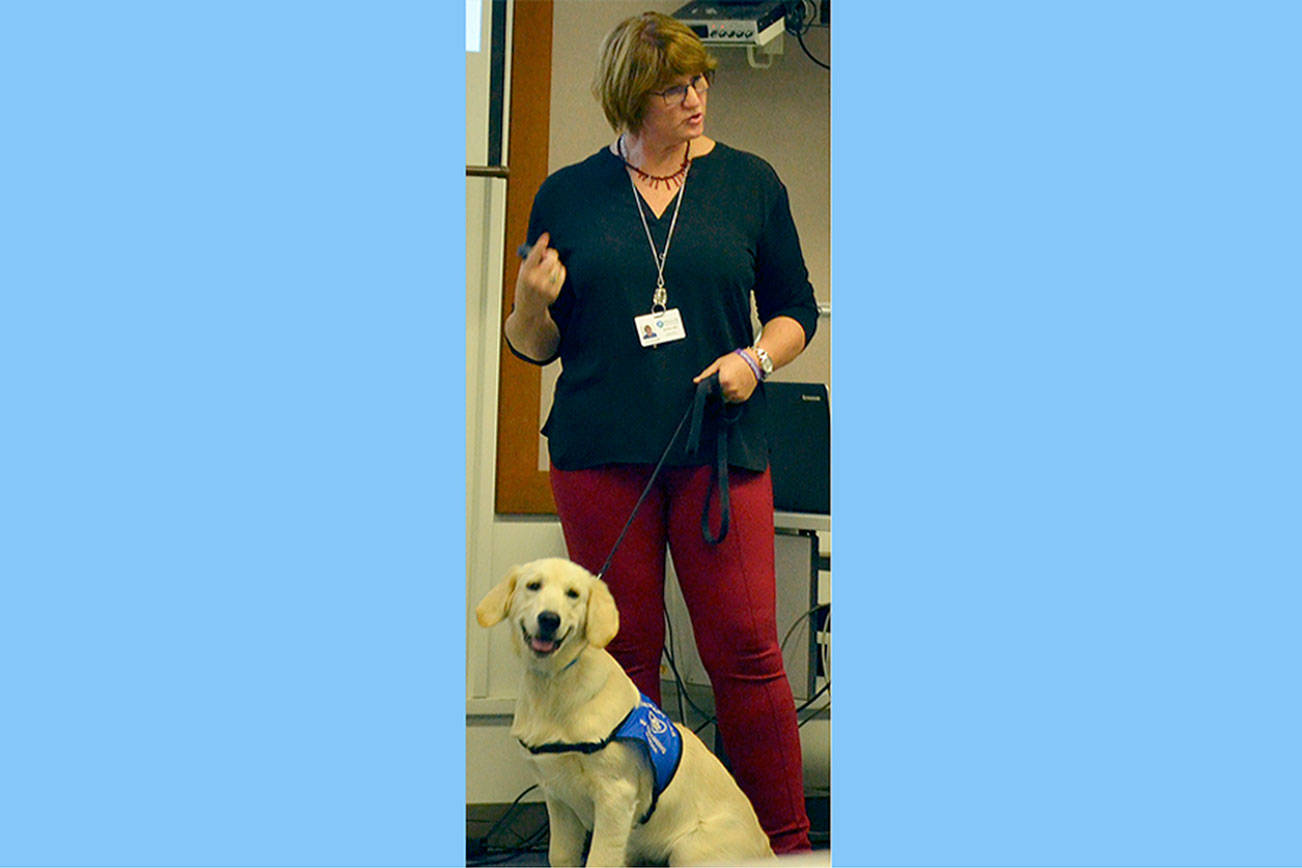MARYSVILLE – The community should “Be GLAD” the Marysville School District is implementing a new curriculum with that very name.
Statistics shown at the school board meeting work session Tuesday show that 6 percent of students in math and 13 percent in English passed a high school standardized test without GLAD. With GLAD, the numbers were 89 percent and 94 percent at the pilot alternative high school in California.
After watching a video of a classroom, board members were impressed.
“She mixed up the tempo to keep them engaged,” Chris Nation said of the teacher and students. Pete Lundberg added: “Everybody participated, no matter where they sat. They talk and move.”
The video showed a teacher basically diagramming a sentence through song, rather than the boring old way, said Sophia Taxdahl, district coordinator.
“You can hear them singing in the halls,” she said, Adjective, noun, verb, adverb and prepositional phrase.
By making it personal it stays in your long-term memory, she added. And it’s good for from pre-schoolers to highly capable learners. “You don’t water it down, you go up,” she said.
At the core of GLAD is a gradual release of responsibility: students start with a focus lesson, then move to guided instruction, then collaborative learning and finally independent tasks. “The teacher pulls back, and the kids become the experts,” Taxdahl said.
The coinciding buzz phrases are: “I do it, We do it, They do it together, You do it alone.”
The six components of GLAD are: focus/motivation; input; guided oral practice; writing/reading; extended activities; and closure/evaluation.
Foundational strategies include graphic organizers, pictorial charts and process grids.
About 60 teachers have signed up to take the six days of training without pay right after school ends this summer.
The curriculum involves deeper learning across curriculums. “It touches all subject areas,” Taxdahl said. “That’s where all the world’s going – connections.”
Another thing teachers like is it is works well for English Language Learners.
“They can use pictures even if they don’t understand the words,” said Lori Knudson, executive director of learning and teaching.
With GLAD, teachers also can use a form of sign language to engage students and get them to participate.
“When kids get wiggly signing can bring them back,” said Cassandra Clark, one of the GLAD trainers.
Deborah Parker, director of equity, diversity and indigenous education, said she’s sees GLAD as a more inclusive and colorful way of teaching.
“Even if they know no English they can participate. They can draw a picture,” she said.
They all agreed GLAD goes well with another curriculum already being used called AVID. Both stress personal responsibility when learning.
Lundberg said the curriculum looks like it should be a great fit because every year the district grows in ELL students.
Superintendent Jason Thompson said he sees the value in it because teachers are always looking for new tools. Teachers “want it,” he said. “We’re not telling them to do it.”
Also at the meeting:
•Craig Dennis talked about the district’s Safety and Security plan. It involves responding to emergencies; identifying schools for safety upgrades; school resource officers; assessing student threats and a community safety night.
Portable stanchions have been placed at school entrances to direct visitors to offices. Others are using buzzers or vestibules to monitor entrances. Fencing has been put up at some schools. Drills are taking place with exact locations given for things like a fire to give them more meaning. And flight teams – including special ones for hispanic and Native American students – have been formed for crisis response. For professional development about six active shooter trainings have taken place. Lundberg said he appreciates the comprehensive plan, but disagrees with the state legislature’s thinking that every school should have an officer.
“They think a guy with a gun is going to stop bad things from happening,” he said.
Rather, Lundberg would like more attention paid to school counselors. “They have more affect on student safety,” he said.
Lundberg said one in five students has mental health issues. “The solution’s in the wrong place,” he said.
•Pixie Owyen, Zee Jimicum and Terrance Sables presented Equity, Diversity and Indigenous Education Student of the Month awards to Keiden Monger-Johhny of Grove Elementary, Logan McDaniel of Liberty Elementary, Charley Dick of 10th Street Middle School and Evelyn Vega-Simpson of Marysville-Pilchuck High School.







